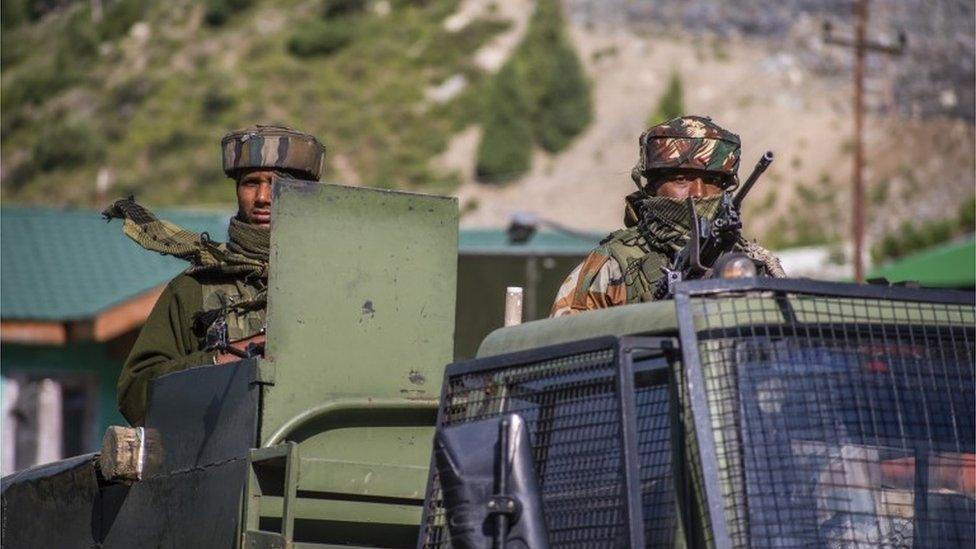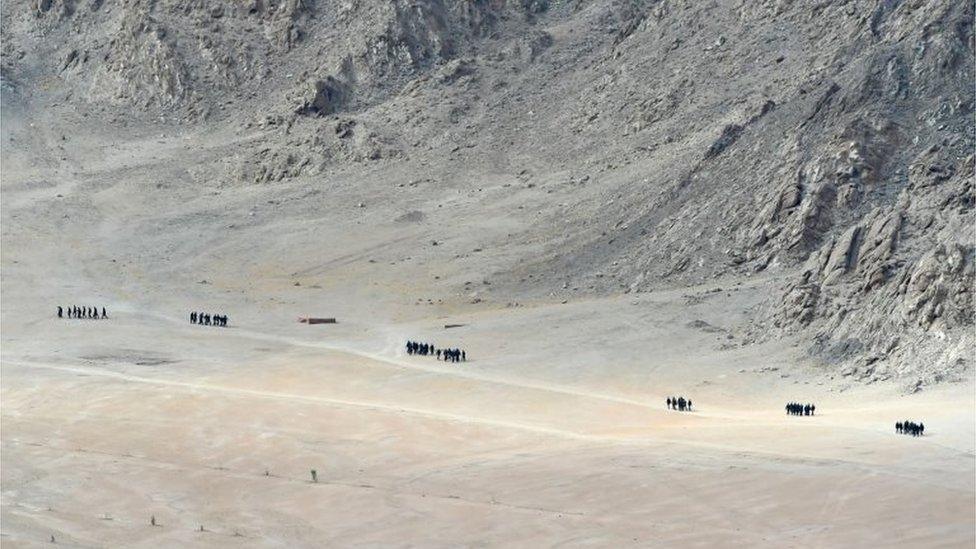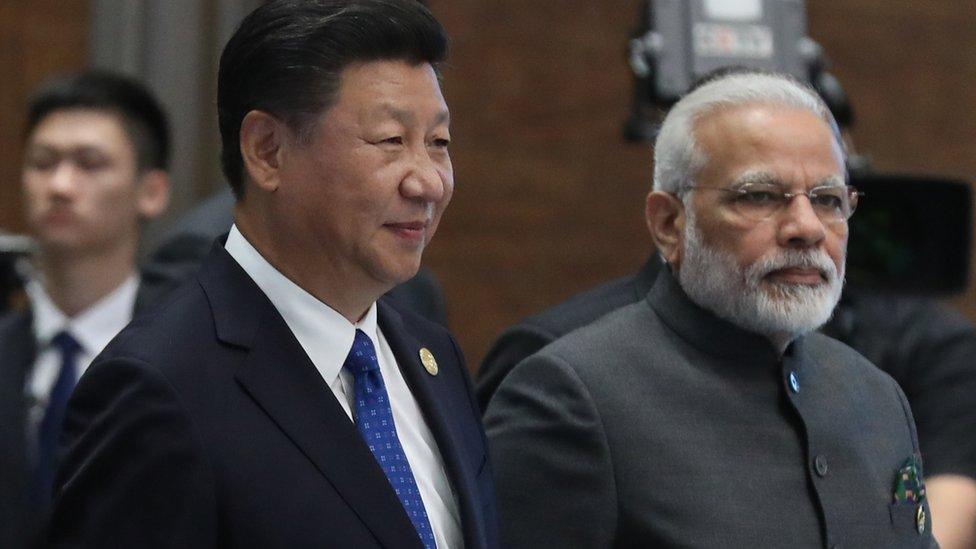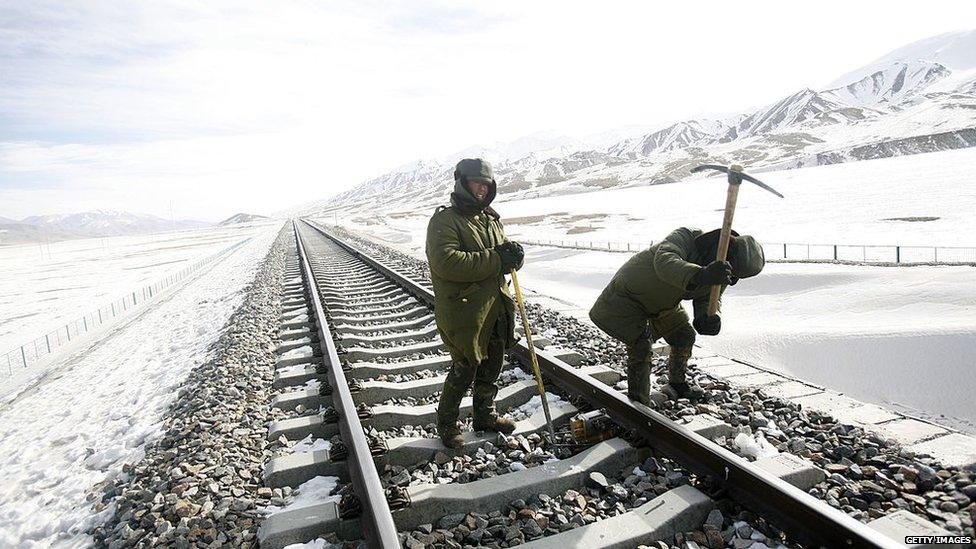India-China dispute: The border row explained in 400 words
- Published

Indian troops near the border with China
Relations between India and China have been worsening. The two world powers are facing off against each other along their disputed border in the Himalayan region.
Here's what you need to know in 400 words.
What's the source of tension?
The root cause is an ill-defined, 3,440km (2,100-mile)-long disputed border.
Rivers, lakes and snowcaps along the frontier mean the line can shift, bringing soldiers face to face at many points, sparking a confrontation.
The two nations are also competing to build infrastructure along the border, which is also known as the Line of Actual Control. India's construction of a new road to a high-altitude air base is seen as one of the main triggers for a deadly 2020 clash with Chinese troops.
How bad is the situation?
Despite military-level talks, tensions continue. In December 2022 troops clashed for the first time in more than a year.
It happened near the Tawang sector of Arunachal Pradesh state, the eastern tip of India. Some soldiers suffered minor injuries.
De-escalation work has taken place since a major clash in June 2020. The Galwan Valley battle - fought with sticks and clubs, not guns - was the first fatal confrontation between the two sides since 1975.
At least 20 Indian and four Chinese soldiers died.
Another face-off in January 2021 left troops on both sides injured. It took place near India's Sikkim state, between Bhutan and Nepal.

In September 2021, China accused India of firing shots at its troops. India accused China of firing into the air.
If true, it would be the first time in 45 years that shots were fired at the border. A 1996 agreement prohibited the use of guns and explosives near the border.
The same month, both countries agreed to disengage from a disputed western Himalayan border area.

Indian soldiers on patrol near Leh, in the disputed frontier region of Ladakh
What's the bigger picture?
The two countries have fought only one war, in 1962, when India suffered a humiliating defeat.
But simmering tensions involve the risk of escalation - and that can be devastating given both sides are established nuclear powers. There would also be economic fallout as China is one of India's biggest trading partners.
The military stand-off is mirrored by growing political tension, which has strained ties between Indian Prime Minister Narendra Modi and Chinese President Xi Jinping.
Observers say talks are the only way forward because both countries have much to lose.

Xi Jinping, left, and Narendra Modi had previously played up a personal bond
Related topics
- Published30 July 2020

- Published30 May 2020
